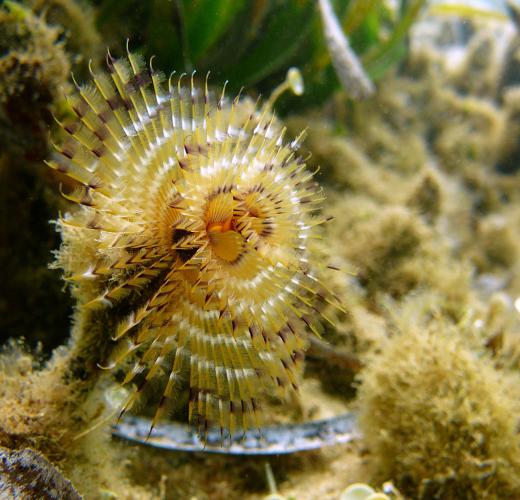In Oceanography, what is Alvin?
 Michael Anissimov
Michael Anissimov
Alvin is a deep submergence vehicle (DSV), the first of its class, designed to explore the ocean floor. Modern nuclear submarines, like the American Seawolf class, have a crush depth of 2,400 ft (730 m), while the DSV has a crush depth of 15,000 ft (4,000 m). Alvin was constructed at General Mills' Electronics Group and commissioned on 5 June 1964. Weighing in at 16 tons, it is owned by the United States Navy and operated by the Woods Hole Oceanographic Institution (WHOI) in Woods Hole, Massachusetts. Throughout its 40-plus years of oceanography service, the vehicle has received a complete overhaul on several occasions.
This DSV was built to replace bathyscaphes and other, less maneuverable oceanography vehicles. One of its primary structural materials is syntactic foam, a composite material consisting of glass microspheres embedded in a matrix of epoxy resin. Syntactic foam is buoyant, but it can withstand extreme pressures. At its maximum depth, the pressure on the vehicle is equivalent to 40 atmospheres.

Because so few vessels in its class have been built, Alvin can claim multiple unique accomplishments, both practical and scientific. On 7 April 1966, it was employed to recover a 1.45-megaton hydrogen bomb lost during a US Air Force refueling accident known as the Palomares Hydrogen Bomb Incident. A mathematical technique, Bayesian search, was used to decide which areas of the ocean floor to search. The search took several weeks.

In 1977, Alvin achieved a major accomplishment by locating black smokers, a type of hydrothermal vent, around the Galapagos Islands in the Pacific. Black smokers are notable because they harbor one of the only ecosystems on Earth entirely independent from the Sun's energy. Around these vents, chemotrophic bacteria thrive from released chemicals, allowing the growth of animals that feed on them, like mussels, shrimp, and tube worms.
One of the most famous applications of Alvin in oceanography was its exploration of the RMS Titanic in 1986. The video footage taken from the sub was broadcast on several TV documentaries, and many of the photos were also published by the National Geographic Society, a major sponsor of the expedition.
AS FEATURED ON:
AS FEATURED ON:












Discussion Comments
I've always wondered why Alvin was called Alvin. I finally found out in class today. Apparently, it was named after an oceanographer who had done a lot of work in this field. His name was Allyn Vine, so they shortened it as Alvin.
He worked with the Navy for many years and developed some of the technology that was used to make Alvin.
@anamur-- I think Alvin retired. It was in use for about forty years and then they developed another vehicle that is even better. So Alvin isn't in use anymore.
The images of the Titanic in the film were also captured by Alvin right?
That has always been my favorite part of the movie, it's amazing to see videos and images of the ship in real life and then a model of what it would have looked like in the past.
It's great that we have been able to see the real Titanic with the help of Alvin and it's also great that the Navy allowed it to be used for this expedition.
What is Alvin doing these days?
Post your comments